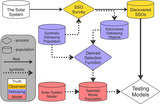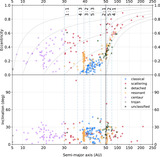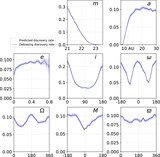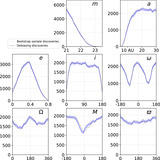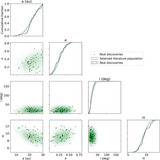Image Details
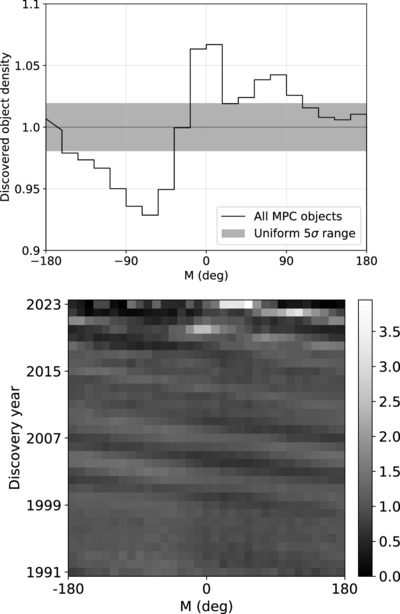
Caption: Figure 1.
An unintuitive effect of a simple observational bias on the orbital distribution of discovered objects listed in the Minor Planet Center orbit database. Top panel: all Minor Planet Center objects by mean anomaly (M) as of 2024 February. Intuitively, we expect the intrinsic distribution of M in the solar system to be uniform. The peaks and troughs are much greater than the 5σ ranges of Poisson distributions around the mean, revealing a strong signal explained in the bottom panel. Bottom panel: the cause of M bias is revealed by spreading the data out by discovery date, with color representing the discovery density by mean anomaly within each year (rows have mean 1). At any given time, objects are discovered in a tight region around M = 0. As time passes, objects increase in M, and a year's set of discovered objects broadens as orbits with different orbital periods drift apart. Orbits of the main belt remain visible as diagonal lines for about two decades, until the drift eventually blurs them together into a uniform distribution with density 1.
Copyright and Terms & Conditions
© 2025. The Author(s). Published by the American Astronomical Society.


